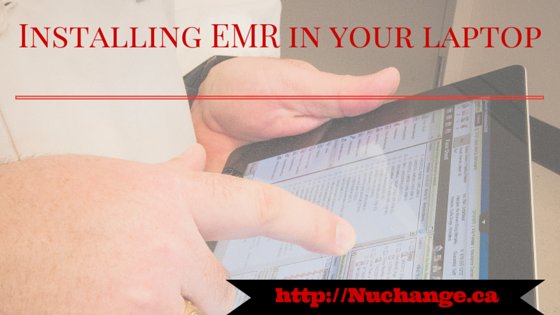OSCAR EMR is a web-based electronic medical record (EMR) system initially developed for academic primary care clinics. OpenMRS is a collaborative open source project to develop software to support the delivery of health care in developing countries.
EMRs and EHRs are of vital importance to health informatics students. Though there are several popular open-source products such as OSCAR EMR, installing them on your laptop can be cumbersome.They are designed for server installations with several prerequisites such as a backend database and a servlet container such as Tomcat. Though OSCAR EMR has an old Windows version, it has been marked as deprecated. If you are not a Linux geek, here is how you can install an EMR (OSCAR), an EHR (OpenMRS) and the popular statistical package R with R-Studio server. That is everything you need for your eHealth sojourn!
OSCAR EMR & OpenMRS Installation instructions
There are ways of creating a virtual Linux machine in your laptop (Mac and Windows). Virtualization leaves your operating system untouched, and the virtual machine can be removed without a trace after use. Without further ado, you can install this in 5 easy steps using my puppet script. Obviously, this is for testing only and not for production.
1. Install VirtualBox.
2. Install Vagrant.
3. Download and extract the zip file below to any folder.
GitHub v1.1.0
This is the first public release
4. Windows users double-click run.bat. Mac users run the following command from the download folder.
vagrant up
(The script takes approximately 30 minutes to setup the machine. However, no response is needed from your part. An internet connection is required.)
5. Access in your browser:
- Access OpenMRS at http://localhost:8001/openmrs (mysql password: mysql) (login:admin password:Admin123)
- Access OSCAR at http://localhost:8001/Oscar10_12 (default login password on screen)
- Access R Studio Server at http://localhost:8001/ (login:vagrant password:vagrant)
To stop the machine on windows, use stop.bat and on Mac:
vagrant suspend
You can restart the machine as step 4 above. Restarting the machine does not require an internet connection.
If you want to destroy (uninstall) the virtual machine, use the following command in the script folder.
vagrant destroy --force
My puppet script is open-source. Feel free to fork and improve the script. Pull-requests are welcome. Join E-Health on GitHub if you want direct write access to the repository.
Update: NuForm – Create a touch sensitive OSCAR eForm in 2 minutes!
- CRISP-T: Bridging Text, Numbers, and AI for Smarter Qualitative Research - October 14, 2025
- Vibe Coding FHIR to OMOP - August 22, 2025
- 🔍 Why FHIRy Matters - August 6, 2025


Thank you. Do you have a script specific for OSCAR?
Hi Kevin
Here is the script for OSCAR/OpenMRS only: https://github.com/E-Health/vagrant-oscar-mcmaster
Pingback: Dockerized OSCAR EMR for developers The script checks out the master branch from OSCAR repo, compile with maven, create Docker containers and deploy them.
Pingback: 10 points to consider before adopting open-source software in eHealth - Bell Eapen
Pingback: Serverless on FHIR - Architectural Guidelines by Bell Eapen
Pingback: Serverless on FHIR: Management guidelines for the semi-technical clinician! - Can-eHealthCan-eHealth